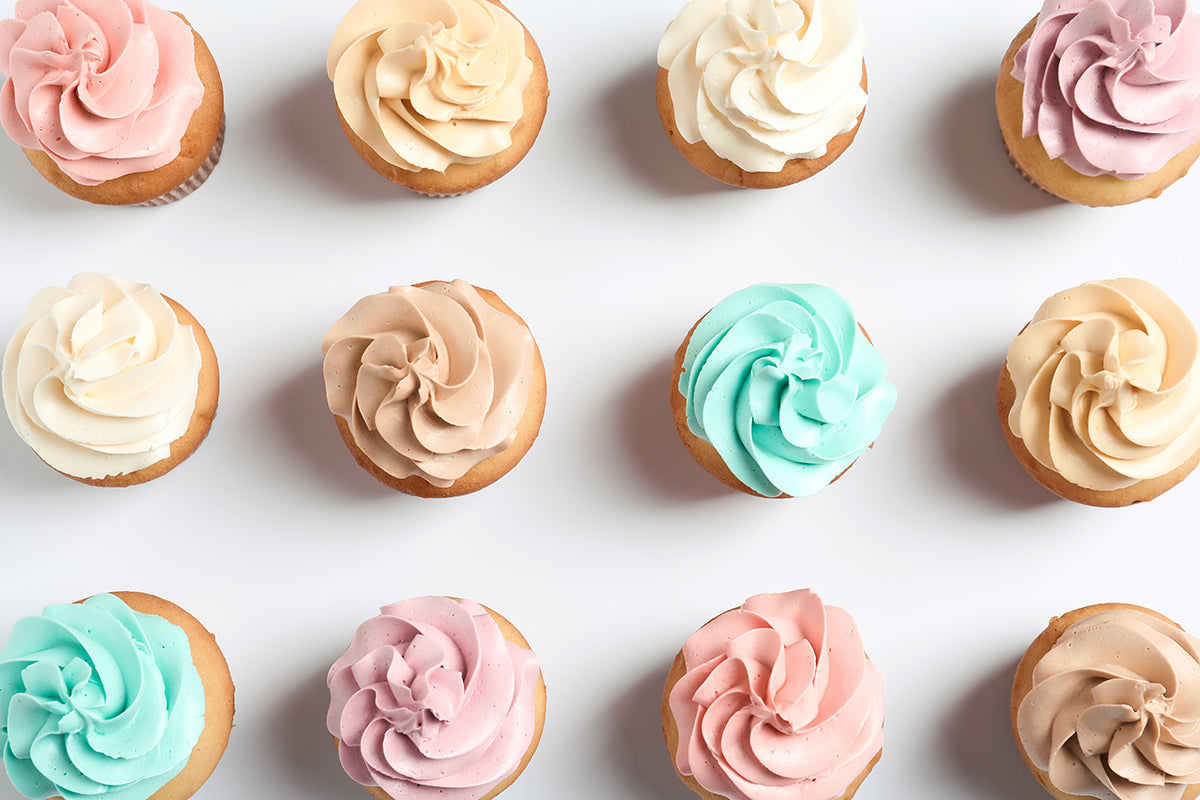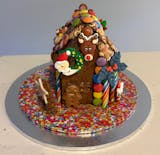The icing on the cake...
•Posted on June 10 2019

The many faces of soft icing
Depending on how it's made, soft icing might refer to a whole range of different recipes. The three most common that we come across in our day to day chats are buttercream, Swiss meringue buttercream and frosting.
The common factor between all of these is that they can all be piped, palleted or spread over cakes and cupcakes.
But not all soft icings are created equal!
1. Buttercream
If you grew up baking, you probably have a buttercream recipe in your repertoire. Mine comes from Mum's trusty family recipe book and is simply creamed butter, icing sugar, vanilla essence and a tiny drop of milk if necessary. This is the most common type of soft icing because it's simple, most homes have the ingredients already and it is delicious to boot.
It's perfect for the sponge cake you'll be baking and serving at home, but we wouldn't recommend it for large multi-tiered designs that require transport as it's prone to splitting or separating in the heat.
Buttercream is also tinted yellow and no amount of creaming is going to get it totally white. So, it's important to keep in mind if you're planning on colouring your icing or if you want to use it for a white wedding cake, that this type of soft icing might not be the best choice for your project.
If you're using a simple buttercream, we recommend keeping your cake or cupcakes refrigerated to avoid any icing mishaps.
2. Swiss Meringue Buttercream
If you can't go past the flavour of butter but want a more stable soft icing, we recommend this Swiss meringue buttercream recipe from Gretchen's Bakery. Yes, it is a more complex recipe compared to the humble buttercream. However, it has the plus side of being whiter and more stable due to the inclusion of vegetable shortening.
If you read Gretchen's recipe, she says this buttercream can be used under fondant, but we disagree (more on that in a future post!). If you absolutely had to use it under fondant, further on in the comments she does clarify that she uses only the thinnest spread.
Even though this is a more stable buttercream, it's a good idea to keep it as cool as possible (air-conditioning or refrigeration), particularly in summer.
3. Frosting
Our in-house frosting is a recipe that was passed to us from Margaret and has been much loved by Cake & Icing Centre customers for years.
If you've ever enquired about our soft icing in store then you've probably heard us say "three ingredients... pure icing sugar, vegetable shortening and water". Because there are so few ingredients, it's really important that the quality of the ingredients are top notch. Our pure icing sugar is freshly milled and we use a creaming shortening that is far superior to the brands you'll find in the supermarket.
There's a few reasons why our frosting is so popular including:
- It is a crusting icing, meaning it will set with a thin crust on the outside and is less likely to mark if touched lightly. In other words, it's very forgiving when placing decorations.
- It has a higher melting point, thus is far better suited to our hot and humid environment.
- It is pure white, so you can achieve bright true colours for your cakes.
Really, we're only just beginning...
There are so many different recipes available to soft ice your cakes. The important thing is to find the best one for your personal taste, style and climate. Most importantly, the better quality your ingredients are, the more success you'll have in flavour and texture.
Keep up to date with our blog for more details and recipes to come!


Comments
0 Comments
Leave a Comment